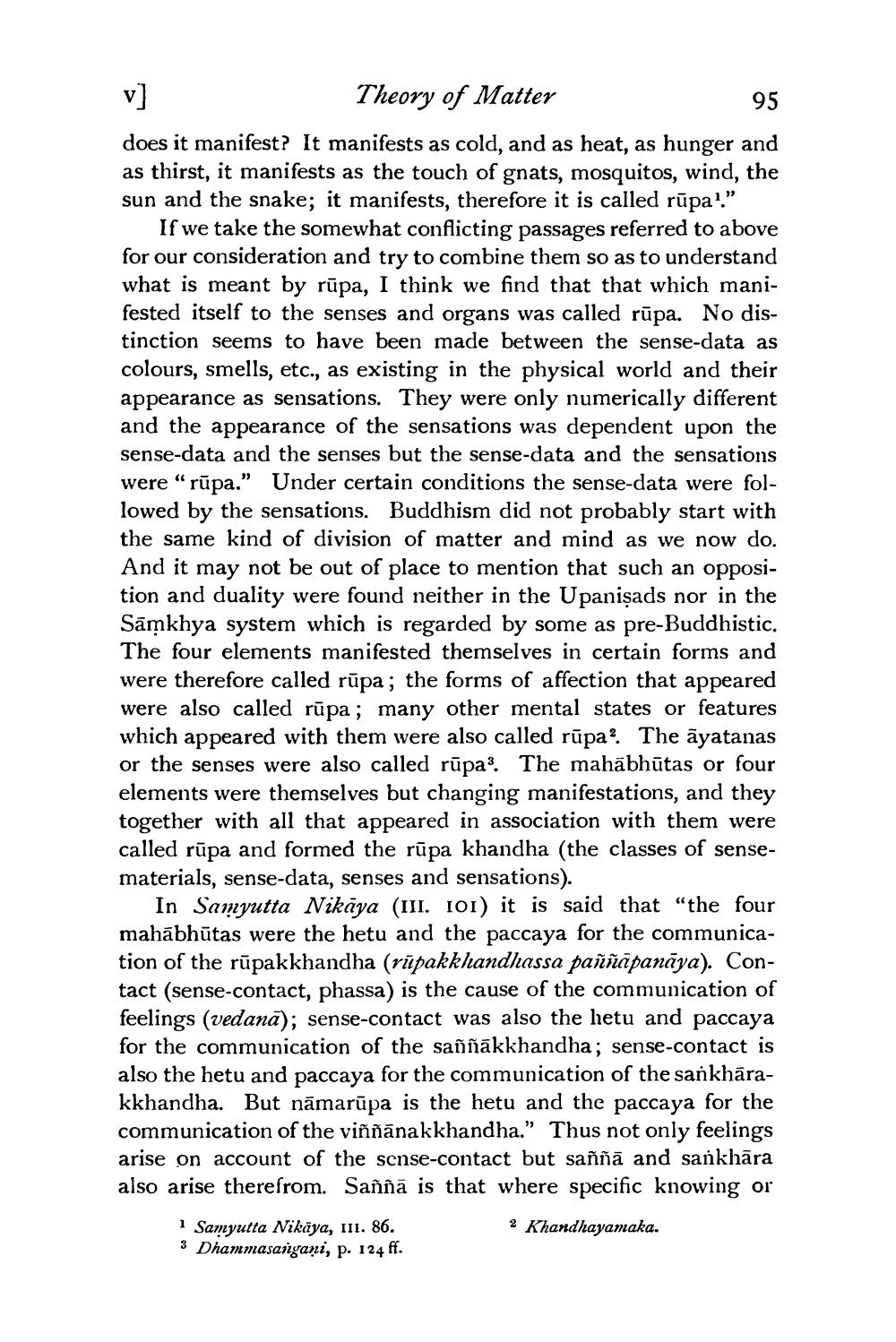________________
v]
Theory of Matter
95
does it manifest? It manifests as cold, and as heat, as hunger and as thirst, it manifests as the touch of gnats, mosquitos, wind, the sun and the snake; it manifests, therefore it is called rūpa!"
If we take the somewhat conflicting passages referred to above for our consideration and try to combine them so as to understand what is meant by rūpa, I think we find that that which manifested itself to the senses and organs was called rupa. No distinction seems to have been made between the sense-data as colours, smells, etc., as existing in the physical world and their appearance as sensations. They were only numerically different and the appearance of the sensations was dependent upon the sense-data and the senses but the sense-data and the sensations were "rupa." Under certain conditions the sense-data were followed by the sensations. Buddhism did not probably start with the same kind of division of matter and mind as we now do. And it may not be out of place to mention that such an opposition and duality were found neither in the Upaniṣads nor in the Samkhya system which is regarded by some as pre-Buddhistic. The four elements manifested themselves in certain forms and were therefore called rupa; the forms of affection that appeared were also called rupa; many other mental states or features which appeared with them were also called rūpa2. The ayatanas or the senses were also called rūpa3. The mahābhūtas or four elements were themselves but changing manifestations, and they together with all that appeared in association with them were called rupa and formed the rupa khandha (the classes of sensematerials, sense-data, senses and sensations).
In Samyutta Nikaya (III. IO1) it is said that "the four mahābhūtas were the hetu and the paccaya for the communication of the rūpakkhandha (rūpakkhandhassa paññāpanāya). Contact (sense-contact, phassa) is the cause of the communication of feelings (vedana); sense-contact was also the hetu and paccaya for the communication of the saññākkhandha; sense-contact is also the hetu and paccaya for the communication of the sankhārakkhandha. But nămarūpa is the hetu and the paccaya for the communication of the viññānakkhandha." Thus not only feelings arise on account of the sense-contact but saññā and sankhāra also arise therefrom. Saññā is that where specific knowing or 2 Khandhayamaka.
1 Samyutta Nikaya, 111. 86. 3 Dhammasangani, p. 124 ff.




